Results 10,571 to 10,580 of 12094
Thread: Anandtech News
-
05-15-20, 11:52 AM #10571
Anandtech: TSMC To Build 5nm Fab In Arizona, Set To Come Online In 2024
In a big shift to their manufacturing operations – and a big political win domestically – TSMC has announced that the company will be building a new, high-end fab in Arizona. The facility, set to come online in 2024, will utilize TSMC’s soon-to-be-deployed 5nm process, with the ability to handle 20,000 wafers a month. And with a final price tag on the facility expected to be $12 billion, this would make it one of the most expensive fabs ever built in the United States.
Operating over a dozen fabs across the globe, TSMC is responsible for a significant share of global logic chip production, particularly with leading-edge and near-leading-edge processes. The company has become perhaps the biggest winner amidst the gradual winnowing of fabs over the past two decades, as manufacturer after manufacturer has dropped out, consolidating orders among the remaining fabs. And with GlobalFoundries dropping out of the race for cutting-edge manufacturing nodes, TSMC is one of only three companies globally that's developing leading-edge process nodes – and one of the only two that’s a pure-play foundry.
This success has become both a boon and a liability for TSMC. Along with Korean rival Samsung, the two companies have seen massive growth in revenues and profits as they have become the last fabs standing. As a result, TSMC serves customers both locally and globally, particularly the United States and China, the two of which are not enjoying the best of relations right now. This leaves TSMC trapped in the middle of matters – both figuratively and literally – as China needs TSMC to produce leading-edge chips, and the United States is now increasingly reliant on TSMC as well following GlobalFoundries’ retreat.
As a result, the Taiwan Semiconductor Manufacturing Company is going to do something it’s never done before, building a near-leading-edge fab in the US, outside of its home base of Taiwan. The new facility, set to be constructed in Arizona, will use the company’s 5nm process, which is currently TSMC’s most advanced manufacturing process. And while this will no longer be the case by the time it comes online in 2024, when 3nm processes are likely to be available, it would still make the Arizona facility among the most advanced fabs in the world, and by far the most advanced contract fab in the United States.
The Arizona facility would be joining TSMC’s other US fab, which is located in Camas, Washington. It, like TSMC’s other non-Taiwanese-fabs, is based around older technologies, with the Camas fab in particular focusing on building flash products using relatively large process nodes (350nm to 160nm). As a result, the Arizona fab represents a significant shift for TSMC; it’s not the first US fab for the company, but it’s the first time TSMC has built such an advanced fab in another nation.
All told, the Arizona fab is set to be a medium-sized facility – a “megafab” in TSMC parlance – despite its use of an advanced manufacturing node. The 20,000 wafers per month throughput of the fab is well below TSMC’s largest “gigafabs” in Taiwan, which can move more than 100,000 wafers per month. As a result while the fab will add to TSMC’s 5nm capacity, it won’t become a massive part of that capacity. Though with an expected price tag of $12 billion, it will still be a very expensive facility to build.
According to TSMC, the primary impetus for building the fab – and especially to build it in the United States instead of Taiwan – is specifically to have high-end production capacity within the United States. With GlobalFoundries dropping out of the race for leading-edge nodes, the US government and other sensitive fabless chip designers are in want of another leading-edge facility within the US to build their chips. Given their location, TSMC’s Taiwanese fabs are seen as security risk, and the US would prefer to be self-reliant rather than relying on a foreign partner – a concern that’s been magnified by the current coronavirus pandemic and the supply chain issues that has created.
The end result is that while the fab is not explicitly reserved for military and other sensitive chips, it’s hard to imagine a scenario where the big commodity chip manufacturers such as AMD and Qualcomm don’t continue to use TSMC’s larger and more efficient fabs in Taiwan. In other words, while the Zen processor you’re playing World of Tanks on isn’t likely to come from Arizona, the chip that goes into an actual tank just might. Unaspiringly then, the planned Arizona fab comes with a lot of interest and support from both Arizona and the US Government, for both strategic and business reasons.
Interestingly, while the desire for more domestic fabs within the US has been well known, the US’s two major domestic fabs find themselves on the outside looking in with this deal. Intel has long tried to lure customers to its own contract manufacturing business, including making pitches to the US government, with little luck. Meanwhile GlobalFoundries is currently the US government’s preferred fab for military hardware – inheriting those fabs and the resulting business from IBM – but whom faces the prospect of slowly losing business as government customers switch to newer manufacturing processes. So in some respects it’s a bit surprising to see outsider TSMC land such a deal, though there are sizable political concerns involved as well.
At any rate, TSMC’s Arizona fab is expected to break ground in 2021, with completion scheduled for 2024. At which point it is anticipated to employ over 1600 workers as TSMC becomes the United States’ second leading-edge foundry provider.
More...
-
05-15-20, 11:52 AM #10572
Anandtech: Honor Magicbook 14 Notebook Review: Where Style Paints a Picasso
There are three major selling factors when it comes to laptops: Specifications, Price, and Style. It is exceedingly rare to have a laptop hit all three, and if often takes a flagship device to score high marks on all three. The first two, specifications and price, often go hand in hand, but one aspect that often gets overlooked in the mid-range is the element of Style.
The Honor Magicbook 14 notebook, which is the subject of this review, scores remarkably high marks for style. Honor, and its parent company Huawei, are primarily in the smartphone business when it comes to consumer products, but over the past couple of years, they have both made efforts to enter the notebook market. With that they bring the sense of style that has governed their smartphone designs to become the second biggest seller in the world. Smartphones from Huawei and Honor are very well received for their ability to capture the eye in a way that other devices do not, and it is this style that Honor brings to its new Magicbook line.
More...
-
05-18-20, 08:25 AM #10573
Anandtech: AMD Ryzen 5 3600 Review: Why Is This Amazon's Best Selling CPU?
Every so often there comes a processor that captures the market. It ends up being that right combination of price, cores, frequency, performance, features and compatibility when added to the right sort of motherboard that makes it fly off the shelves. The main CPU this cycle seems to be the Ryzen 5 3600, offering six high-performance Zen 2 cores and 24 lanes of PCIe 4.0 for only $189. It currently sits at #1 on the Amazon best seller list, so we put one through the paces just to see if the hype was actually real.
More...
-
05-18-20, 08:25 AM #10574
Anandtech: MediaTek Announces Dimensity 820 Mid-Range SoC With More Performance
Today MediaTek is announcing a refresh of the Dimensity 800 mid-range SoC – a new 5G chipset that had only been announced earlier this year at CES. The newer Dimensity 820 greatly improves the CPU performance of the chip, adds in an extra GPU core, and improves the ISP’s imaging capabilities with newer high-resolution sensors.
The biggest upgrade on the new refreshed SoC is the clock frequencies of its four Cortex-A76 performance cores, which see a uptick from the original 2.0GHz frequency up to a much higher 2.6GHz target on the new chipset. That’s quite a substantial 30% clock uptick for an inter-generational update like this – which begs the question on whether this is a better binned part, a silicon respin, or outright a design update over the Dimensity 800.MediaTek SoCs SoC Dimensity 1000(+) Dimensity 820 Dimensity 800 CPU 4x Cortex A77 @ 2.6GHz
4x Cortex A55 @ 2.0GHz4x Cortex A76 @ 2.6GHz
4x Cortex A55 @ 2.0GHz4x Cortex A76 @ 2.0GHz
4x Cortex A55 @ 2.0GHzGPU Mali-G77MP9 @
? MHzMali-G57MP5 @
≤ 900 MHzMali-G57MP4 @
? MHzAPU / NPU / AI Proc. / Neural IP 3rd gen APU
2 "big" + 3 "small" + 1 "tiny"
4.5TOPs total perf3rd Gen APU
"four cores"
big + small + tiny
+2.4TOPs total perfMemory 4x 16b LPDDR4X 2x 16b LPDDR4X @ 2133MHz ISP/Camera 80MP
or
32MP + 16MP1x 80MP
or
2x 32+16MP1x 64MP
or
2x 32+16MPEncode/
Decode2160p60
H.264 & HEVC
& AV1 (Decode)2160p30
H.264 & HEVCIntegrated Modem 5G NR Sub-6
DL = 4600Mbps
200MHz 2CA, 256-QAM,
4x4 MIMO
UL = 2500Mbps
200MHz 2CA, 256-QAM,
2x2 MIMO
LTE Category 19 DL5G NR Sub-6
DL = 2300Mbps
100MHz 2CA, 256-QAM,
4x4 MIMO
UL = 1250Mbps
100MHz 2CA, 256-QAM,
2x2 MIMO
LTE Category ? DLConnectivity WiFi 6 (802.11ax)
+ Bluetooth 5.1
+ Dual Band GNSSWi-Fi 5 (802.11ac)
+ Bluetooth 5.1Mfc. Process N7
Notably, MediaTek also upgraded the GPU specifications of the SoC, now disclosing a Mali-G57MP5, one more core than the MP4 configuration of the Dimensity 800. Again, we don’t know if this means that the original SoC had disabled GPU cores, or if this is an updated design with a bigger GPU.
The SoC’s ISP has been upgraded in performance to now handle single camera sensors up to 80MP resolution, an uptick over the 64MP advertised capabilities of the D800.
As with the whole new “Dimensity” SoC line-up, it’s differentiating feature that sets it apart from previous “Helio” SoCs is the fact that it supports 5G connectivity. Here the Dimensity 820, like the D800 before it, supports all communication standards from 2G to 5G NR sub-6GHz, only lacking mmWave connectivity (Which given MediaTek’s markets and price-point of this SoC, makes sense).
We still haven’t seen all that many devices with the Dimensity 800 – but the newer Dimensity 820 seems to be quite a bigger performance update, and we’re expecting more vendors to announce new phones with the SoC in the coming months.
Related Reading:- MediaTek Announces Dimensity 1000+ SoC
- CES 2020: MediaTek Announces New Dimensity 800 Mid-Range 5G SoC
- MediaTek Announces Dimensity 1000 SoC: Back To The High-End With 5G
- Intel and MediaTek Announce Partnership To Bring 5G Modems to PCs
- MediaTek Announces New Helio G90 Series SoCs: Gaming Focused Mid-Range
More...
-
05-18-20, 01:33 PM #10575
Anandtech: Huawei Matebook X Pro and Matebook 13 2020 Models Available For Pre-Order
Back in February this year, we published an announcement that Huawei was planning on refreshing its Matebook X Pro for 2020. Following on from this, Huawei has announced that it is taking pre-orders on its new Matebook X Pro 2020 models, with both laptops featuring Intel's 10th Gen Comet Lake mobile processors. Available with either an Intel Core i5-10210U and Core i7-10510U processor, the Matebook X Pro features an LTPS 13.9-inch display with touchscreen capabilities. Further to this, Huawei has also announced the pre-order availability of its new Matebook 13 2020 model, which also benefits from Intel's 10th gen Comet Lake mobile processors, with a 512 GB PCIe SSD, and a 13 inch, 2160 x 1440 IPS panel.
The new Huawei Matebook X Pro 2020 model is currently available to pre-order in two different configurations. Starting with the top-spec model, it comes with an Intel Core i7-10510U processor with a 1.8 GHz base frequency and a turbo frequency of up to 4.9 GHz. Included is 16 GB of LPDDR3-2133 memory and a large 1 TB NVMe PCIe SSD, with a 13.9 inch LTPS 3000 x 2000 10-point touchscreen display powered by an NVIDIA GeForce MX250 graphics chip. The Intel Core i5-10210U Matebook X Pro 2020 model is similar in spec but comes with a slightly smaller 512 GB NVMe PCIe SSD, but with the same 16 GB of LPDDR3-2133 memory.
Featured across both of Huawei's new Matebook X Pro 2020 model is a 56 Wh lithium polymer battery which Huawei rates for up to 13 hours of local video playback. This includes a USB Type-C 65 W charging adapter. Also featured within the space grey aluminium alloy frame is a 1-megapixel recessed camera, a Wi-Fi 5 wireless interface with support for BT 5.0 devices, as well as a quad-speaker and microphone array for improved audio output and input quality. Each Matebook X Pro 2020 includes a single USB 3.0 Type-A, two USB 3.1 Type-C ports with support for charging, data transfer, and DisplayPort output capability, as well as a single 3.5 mm microphone and headphone combo jack.
Huawei has also announced two new Matebook 13 2020 models which feature differentiating characteristics to the Matebook X Pro 2020 pair, although it is available in both with an Intel Core i7-10510U and cheaper i5-10510U. Focusing on the higher-spec of the two Matebook's, it is shipped with 16 GB of LPDDR3-2133 memory, and a touchscreen 13 inch, 2160 x 1440 IPS display with a 3:2 aspect ratio, which is powered by NVIDIA's GeForce MX250. The lower-spec model has an i5-10510U processor, 8 GB of LPDDR3-2133 memory, and a standard 13 inches 2160 x 1440 IPS display. Both Huawei Matebook 13 2020 models share the same space grey aluminium alloy frame with a 512 GB PCIe SSD, two USB Type-C inputs with one support charging, a 1-megapixel front-facing webcam, dual speaker and microphones, with a single 3.5 mm headphone/combo jack for external audio peripherals.Huawei Matebook X Pro and Matebook 13 Specifications Matebook X Pro 2020 Matebook 13 2020 CPU Intel Core i5-10210U - 4C 8T
Intel Core i7-10510U - 4C 8TIntel Core i5-10210U - 4C 8TIntel Core i7-10510U - 4C 8TGPU NVIDIA GeForce MX250
Intel UHD GraphicsDisplay 13.9 Inch 3000 x 2000?3:2 LTPS Touchscreen91% Screen to body ratio13 Inch 2160 x 1440
3:2 IPS Touchscreen (i7 Only)
88% Screen to body ratioMemory 16 GB LPDDR3-2133 8 GB LPDDR3-2133
16 GB LPDDR3-2133 (Touchscreen)Storage 512 GB NVMe PCIe SSD
1 TB NVMe PCIe SSD512 GB PCIe SSD Networking Wi-Fi 5 802.11ac Power 65 W USB Type-C Power Adapter Battery 56 Wh Lithium Polymer 41.7 Wh Lithium Polymer Ports 2 x USB 3.1 Type-C (Charging, DP)
1 x USB 3.0 Type-A
1 x 3.5 mm (phono/mic)2 x USB 3.1 Type-C (Charging)1 x 3.5 mm (phono/mic)Dimensions (WxDxH) 304 x 217 x 14.6 mm 286 x 14.9 x 211 mm Weight (Approx) 1.33 kg 1.3 kg Price (USD) Starts at £1300 Starts at £850
The new Huawei Matebook X Pro 2020's can be pre-ordered directly from the Hauwei UK website with the Intel Core i7-10510U with 16 GB of LPDDR3-2133 and a 1 TB NVMe PCIe SSD coming at the cost of £1600, with the i5 and 512 GB NVMe PCIe model starting from £1300. The Huawei Matebook 13 2020's offer similar features, albeit not as premium as the Matebook X Pro, and start from £850 for the i5 and 8 GB of LPDDR3 memory, while the higher-spec i7 with a touchscreen IPS panel and 16 GB LPDDR3 model costs £1200.
Each model is only available in space grey at the moment, although Huawei has stated that they will be doing emerald green and mystic silver versions. At the time of writing, all of the new Matebook X Pro 2020 and Matebook 13 2020 models on the Hauwei store come with a choice of a free gift. This includes a MediaPad T5 tablet, FreeBuds3 wireless headphones, or a GT2e smartwatch.
Related Reading- Honor Magicbook 14 Notebook Review: Where Style Paints a Picasso
- Dell Revamps XPS 15 And Brings Back XPS 17
- New Lenovo ThinkPad Range with Ryzen 4000 and 4000 PRO Mobile
- Apple Launches New 13" MacBook Pro: 10th Gen Ice Lake and New Scissor Keyboard
- Intel Details 10th Gen Comet Lake-H for 45 W Notebooks: Up to 5.3 GHz*
More...
-
05-18-20, 01:33 PM #10576
Anandtech: Sponsored Post: MSI’s Z490 Motherboard Guide
Alongside the arrival of Intel's 10th Generation processors, motherboard developers like MSI have launched more than 40 new Z490 motherboards to accompany the new CPUs. Among these, there are some important improvements over previous Z390 motherboards. These include greater capacity CPU power delivery systems, higher memory frequency support, and high-speed connectivity including 10GbE/2.5GbE LAN, Wi-Fi 6 and I/O like Thunderbolt 3 and USB 3.2 Gen 2x2 (20Gbps).
More...
-
05-19-20, 06:05 AM #10577
Anandtech: Samsung Announces New 50MP Dual-Pixel and Quad-Bayer ISOCELL Sensor
Samsung today has announced a brand-new flagship sensor in the form of the ISOCELL GN1. The new sensor is seemingly a follow-up to the 108MP ISOCELL HMX and HM1 sensors that we’ve seen employed by Xiaomi devices and the Galaxy S20 Ultra.
The big changes in the new GN1 is that it uses are different optical formula to the existing larger megapixel sensors. It’s only a bit less than half the resolution at a maximum of 50 megapixels, however the per-pixel pitch grows from 0.8µm to 1.2µm.
It seems that Samsung’s main rationale to grow to a larger pixel pitch wasn’t just the per-pixel increased light gathering ability, but rather the enablement to re-introduce full sensor dual-pixel phase-detection. The existing 108MP sensors that have been out in the market have been using 2x1 distributed on-chip lens phase detection autofocus pixels on the sensor, with the autofocus performance not been nearly as performant and a dual-pixel PD solution. In theory, the GN1 using dual-pixel PD pixels means that it uses pairs of 0.6µm x 1.2µm photo sites.
The GN1 is also the first sensor to pair the dual-pixel technology with a quad-bayer colour filter array, which Samsung calls Tetracell. In effect, the 50MP sensor will natively bin 2x2 pixels to produce a 12.5MP image with effective pixel pitches of 2.4µm. Interestingly, Samsung also talks about providing software algorithms to be able to produce 100MP images by using information from each individual photodiode – which all sounds like pixel-shift super resolution techniques.
The size of the sensor remains at a large 1/1.33” – in essence it’s most comparable to Huawei’s current 50MP sensor that is found in the P40 series phones – with the addition of Dual Pixel PD.
The sensor still supports 8K30 video recording, but we hope it’s able to achieve this with a smaller image crop compared to the current HM1 implementation in the S20 Ultra.
These new generation sensors are extremely challenging for vendors to properly use – besides the increased computational workload to actually use the full resolutions (the reduction from 108MP to 50MP will help there), there’s also the challenge of providing adequate optics that can take advantage of the resolution. It seems the GN1 here is a bit more reasonable in its demands, other than its sheer large size.
Related Reading:- Samsung Unveils ISOCELL Bright HMX 108 MP Sensor for Smartphones
- Samsung Unveils 64 MP & 48 MP ISOCELL Bright Image Sensors for Smartphones
- Sony to Build New Fab to Boost CMOS Sensor Output
More...
-
05-19-20, 10:31 AM #10578
Anandtech: AMD to Support Zen 3 and Ryzen 4000 CPUs on B450 and X470 Motherboards
In a surprising twist, AMD has today announced that it intends to enable Ryzen 4000 and Zen 3 support on its older B450 and X470 Motherboards. This is going to be a ‘promise now, figure out the details later’ arrangement, but this should enable most (if not all) users running 400 series AMD motherboards to upgrade to the Zen 3 processors set to be unveiled later this year.
More...
-
05-20-20, 01:30 PM #10579
Anandtech: The Intel Comet Lake Core i9-10900K, i7-10700K, i5-10600K CPU Review: Skyl
The first thing that comes to mind with Intel’s newest line of 10th Generation desktop processors is one of ‘14nm Skylake, again?’. It is hard not to ignore the elephant in the room – these new processors are minor iterative updates on Intel’s 2015 processor line, moving up from four cores to ten cores and some extra frequency, some extra security measures, a modestly updated iGPU, but by and large it is still the same architecture. At a time when Intel has some strong competition, Comet Lake is the holding pattern until Intel can bring its newer architectures to the desktop market, but can it be competitive?
More...
-
05-20-20, 05:51 PM #10580
Anandtech: Intel Acquires Rivet Networks: Killer Networking is all in for Team Blue
News hot off the wire is that Rivet Networks, the company behind the Killer range of accelerated networking products and analysis tools, is being acquired by Intel. The two companies have been working very closely of late, using a unified silicon strategy for the latest gigabit Ethernet networking silicon and also Wi-Fi 6 add-in cards and CNVi CRF modules for laptops. This new acquisition for Intel will enable an element of Ethernet traffic monitoring and optimization the portfolio has not had before, but it will be interesting to see how Intel hands the acquisition compared to when Qualcomm Atheros acquired Rivet Networks some years ago.
More...
Thread Information
Users Browsing this Thread
There are currently 13 users browsing this thread. (0 members and 13 guests)






 Quote
Quote
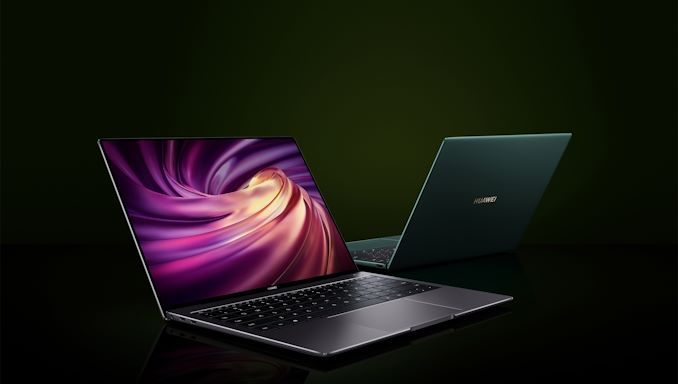
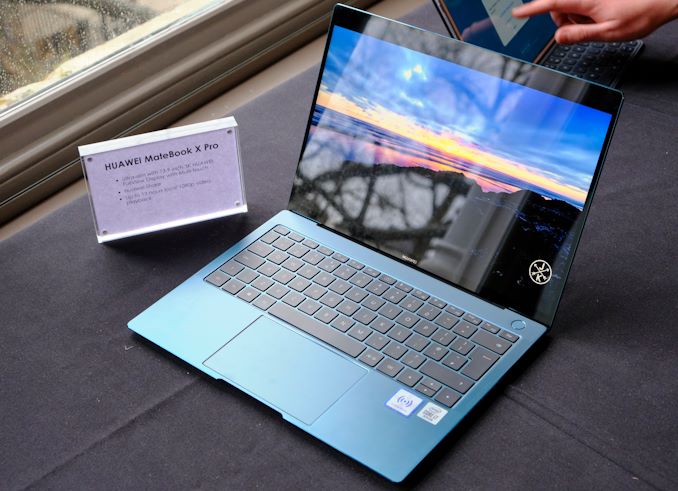
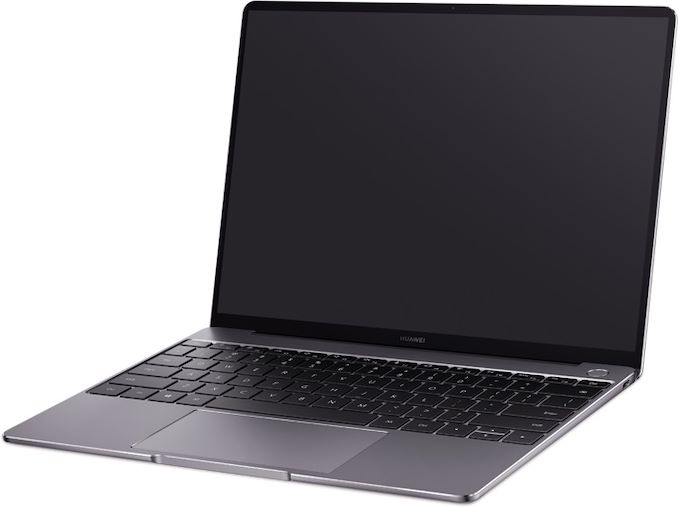
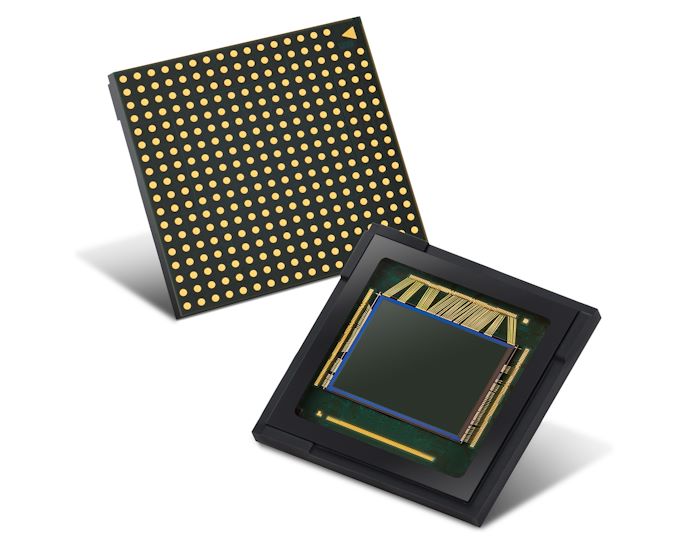
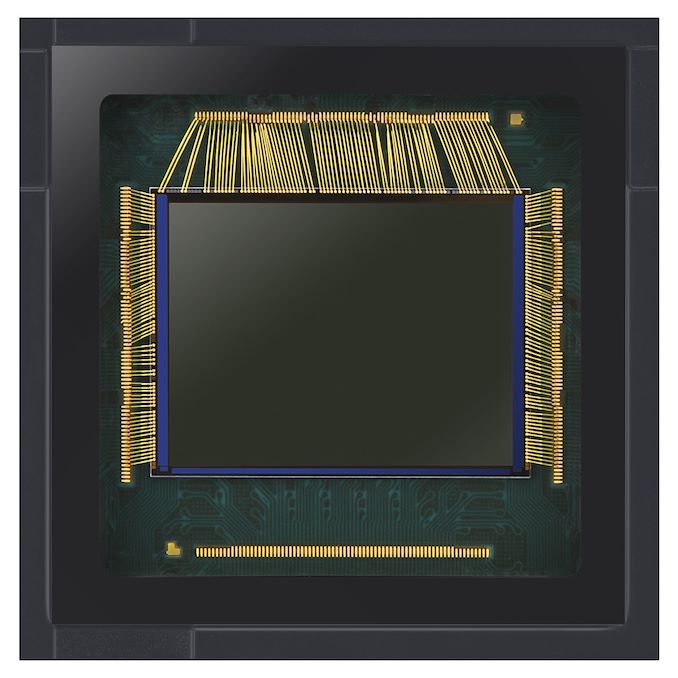

















Bookmarks